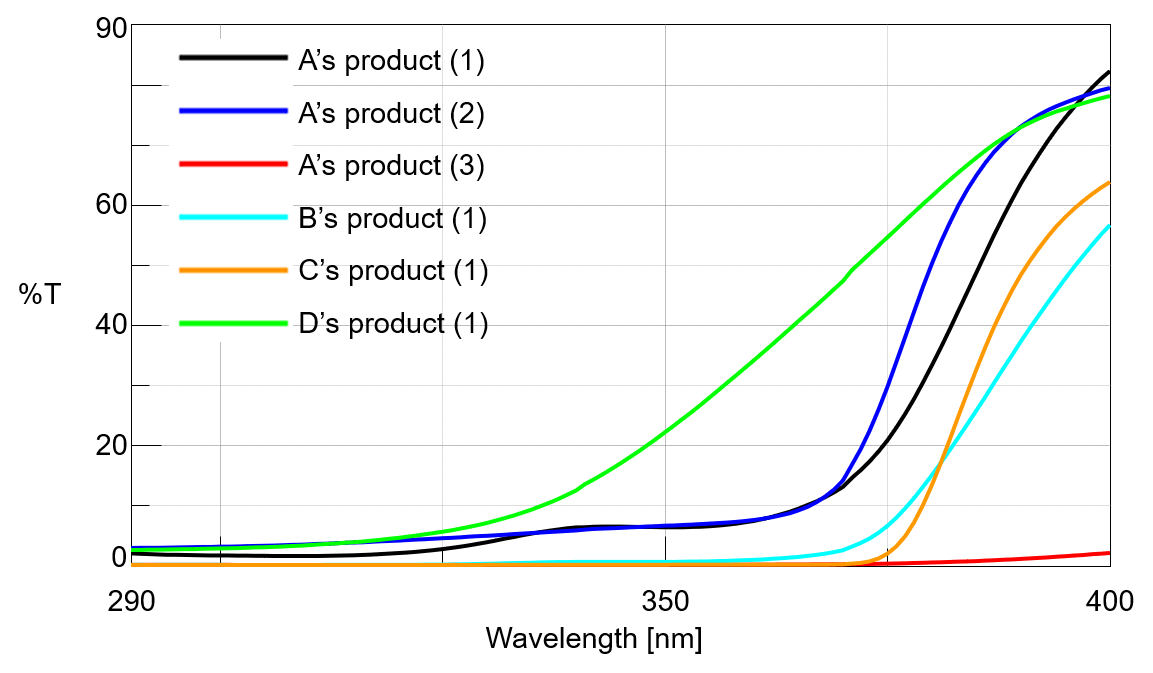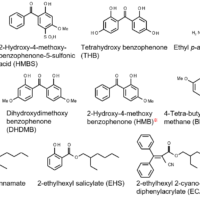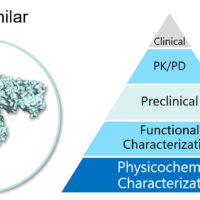Introduction
Spectroscopic Analysis of Sunscreen SPF/PA is made with reference to two rating systems used to assess the protection offered by sunscreens and cosmetics: SPF (Sun Protection Factor) and PA (Protection Grade for UV-A). Both are used to indicate the level of protection provided by skin care products against skin damage from UV radiation.
The SPF value represents the ratio of time for sunburn by UV with and without the protection of the product. For example, in the case of skin irradiated by UV, using SPF25 it takes 25 times longer to obtain the same amount of sunburn to the skin than without using the product. On the other hand, the PA value represents the ratio of time for developing a suntan. For example, if the PA values is less than 2, “PA” is used as indicator. For a PA value from 4 to 8, the indicator is “PA++”.
The test methods for SPF and PA calculations are based on two international standards for in-vivo evaluation: ISO-24442 and ISO-24444. These methods irradiate human skin, which sunscreen has been applied at 2 mg or 2 µL per 1 cm2, with UV from an artificial sunlight source. The minimum time until redness develops is evaluated for the areas of skin with and without the cream.
However, these test methods are costly and individual differences can contribute to a subjective variation in results. Therefore, JASCO has developed an analysis of sunscreen SPF/PA evaluation system based on the ISO standards. The system is used to calculate the SPF and the PA values from the transmittance spectra of sunscreens using a UV-visible spectrophotometer. A special cell (Figure 1) has been developed to reproduce the application of sunscreen at a rate of 2 μL per 1 cm2.

Figure 1. SPF cell
This article evaluates the measurement and analysis of SPF and PF value of sunscreen cream.

V-750 UV/Visible spectrophotometer
Experimental
The equation below is used to calculate an SPF equivalent value. The numerical figures after the decimal points of the value are rounded down. If the value is less than 50, it is used as is. If the value is greater than 50, the SPF is defined as 50+.

where E( λ) is the radiation intensity of sunlight (AS/NZA 4399:1996), R( λ) is the CIE reference erythema action spectrum (CIE J.6: 17-22, 1987), and T(λ) is the diffuse transmittance spectrum (%).
The PA equivalent value can be calculated using the following equation:

where E(λ) is the radiation intensity of sunlight (AS/NZA 4399:1996), M( λ) is minimum sustained immediate blackening action spectrum (1.00), and T( λ) is the diffuse transmittance spectrum (%).
The PA values are classified into 5 grades according to their PA equivalent value and are labeled corresponding to their grade:
| PA | Less than 2 PA equivalent value |
| PA+ | From 2 to 4 PA equivalent value |
| PA++ | From 4 to 8 PA equivalent value |
| PA+++ | From 8 to 16 PA equivalent value |
| PA++++ | More than 16 PA equivalent value |
The following samples were measured using the parameters from the Measurement conditions table:
| Company A’s product (1) | SPF50+, PA++++ |
| Company A’s product (2) | SPF34, PA+++ |
| Company A’s product (3) | SPF50+, PA++++ |
| Company B’s product | SPF50+, PA++++ |
| Company C’s product | SPF50, PA+++ |
| Company D’s product | SPF25, PA++ |
Measurement Conditions
Bandwidth: 5.0 nm
Scan speed: 100 nm/min.
Response: 0.96 sec.
Data interval: 1 nm
Keywords
UV-Visible/NIR Spectrophotometer, Diffuse transmittance, Integrating sphere, SPF/PA Calculation program, analysis of sunscreen SPF
Results
Depending on the nature of the sample, the transmittance may change due to solvent evaporation. Therefore, for a sample that may exhibit a change in transmittance, the measurement is not made until all changes in transmittance had ceased. An example of this is shown in Figure 2.

Figure 2. Example of transmission spectra after sampling
The transmission spectrum of each of the 6 samples is shown in Figure 3 and the calculated SPF and PA results are shown in Table 1.

Figure 3. Sample transmittance spectra
Table 1. Labeled and calculated SPF and PA sample values
| Sample | Labeled Value | Calculated Value | ||||
| SPF Value | PA Value | SPF Value | SPF Equivalent Value | PA Value | PA Equivalent Value | |
| Product A (1) | SPF50+ | PA++++ | 50+ | 59.3 | PA+ | 3.7 |
| Product A (2) | SPF34 | PA+++ | 34 | 34.6 | PA+ | 3.8 |
| Product A (3) | SPF50+ | PA++++ | 50+ | 1051.3 | PA++++ | 209.2 |
| Product B | SPF50+ | PA++++ | 50+ | 174.6 | PA++ | 7.3 |
| Product C | SPF40 | PA+++ | 50+ | 178.9 | PA++ | 6.6 |
| Product D | SPF25 | PA++ | 18 | 18.1 | PA+ | 2.4 |
Conclusion
In some cases, the results calculated using this system and labeled values from the sunscreen samples did not match. This is due to the differences between the results from the UV irradiation experiments on human skin and the measurements using a UV-visible spectrophotometer. The skin test is influenced by the differences in reaction times in subjects, repeatability of application, difficulty of subjective visual evaluation, sweating during the test, and its influence on UV irradiation. On the other hand, the spectroscopic is unaffected by all of the above.
The SPF/PA value calculated by this system may not always correspond with the labelling value based on tests directly on the human body. However, the spectroscopic method is simple and a quantitative SPF/PA value can be obtained, and it is considered valid for preliminary evaluation before performing tests on human skin and in many cases offers a direct correlation.





